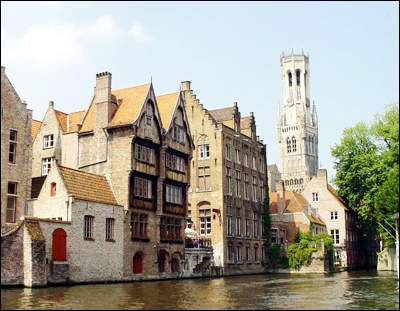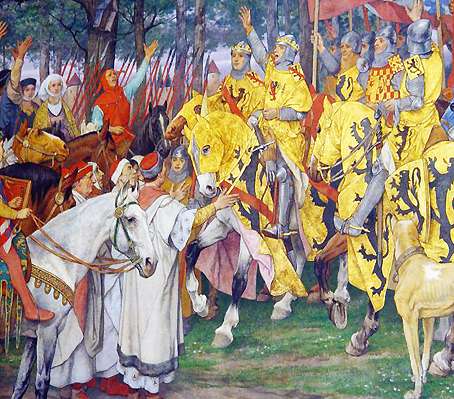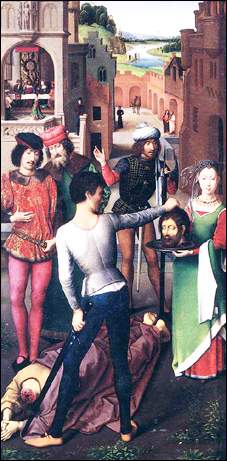| |
Home
| Accommodation
| Pictures
| Neighbourhood
| Ground
map | About
Bruges | FAQ's
| Contact
| Price
| |
Bruges InfoBruges is Belgium's most beautiful cityThe Historic Town of Bruges is testimony, over a long period, of a considerable exchange of influences on the development of architecture, particularly in brick Gothic, as well as favouring innovative artistic influences in the development of medieval painting, being the birthplace of the school of the Flemish Primitives. The Historic Town of Bruges is an outstanding example of an architectural ensemble, illustrating significant stages in the commercial and cultural fields in medieval Europe, of which the public, social, and religious institutions are a living testimony. The town of Bruges has been the birthplace of the Flemish Primitives and a centre of patronage and development of painting in the Middle Ages with artists such as Jan van Eyck and Hans Memling. Bruges is an outstanding example of a medieval historic settlement, which has maintained its historic fabric as this has evolved over the centuries, and where original Gothic constructions form part of the town's identity. As one of the commercial and cultural capitals of Europe, Bruges developed cultural links to different parts of the world. It is closely associated with the school of Flemish Primitive painting. Canals and waterways meander under humpbacked bridges
and through winding streets of gabled houses to make up the delightful
city of Bruges. Sightseeing Alternatively you can let a horse-drawn carriage take you around the sights. A romantic and individual tour in the heart of Bruges' medieval centre along the canals, over the typical small bridges on the rhythm of the horse's trot. The coach-driver explains the city to you, and halfway the trip, the horse is getting a rest at the Beguinage where you can descend. A typical way to discover the real Bruges, where you see picturesque corners, several famous museums and most of the historical sites. The carriages mostly drive to the Beguinage. In function of the traffic situation the coach driver can show you also the St-Anne neighbourhood with the windmills. In July and August, when the weather is fine, a late-night trip shows you the romantic illuminated city. The Markt, Bruges' main square, and the nearby square known as the Burg form the centre of the city. The fine buildings surrounding the Markt with their magnificent facades make this a truly grand place.
The most impressive building is The Belfry with its fine carillon.
Its tower soars high above the city, climb to the top of the 249ft tower
to see spectacular views of the city and surrounding areas. Belgium's oldest town hall is in another square, the Burg. The original facade, painted by Jan van Eyck, was destroyed at the end of the 18th century but the turrets and narrow windows still display a proud dignity. The Burg Square is encircled by very fine buildings such as the Old Law Courts, the Old Recorder's House, the Town Hall and the Basilica of the Holy Blood said to contain the blood of Christ. You will also find the Tourist Office on this Square. On the trail of more treasure, make for the Church of Our Lady. Here you'll find the only work of Michelangelo to leave Italy in his lifetime. The exquisite Madonna and Child, carved from a single block of white marble, was brought to Bruges because the cathedral in Siena, for which it was intended, couldn't pay. We can admire it today, without cost. But there is a charge to see the fantastically decorated Renaissance tombs of Mary of Burgundy and her father, Charles the Bold. The Lace Centre comprises a museum and workshop where the lace-makers can be watched at work. Bruges also has a dazzling new diamond museum. It is located in a restored 17th Century mansion and includes an exhibition and diamond polishing demonstrations in the medieval cellar. A visit to Bruges would not be complete without a walk to the Minnewater,
known as the Lake of Love. From here it's only a short walk to the secluded
Beguinage, where Benedictine nuns live in tidy white houses set around
a neat little green. Despite being a popular tourist attraction, the
nuns continue a life of quiet work and meditation. One of the houses,
is open to the public. It celebrates the work of the Beguine convent
that was established on this spot in 1245 and also provided a refuge
for unmarried ladies - who were then relegated to a demure existence
of looking after the sick and making lace. After this, get a taste of
an other side of Bruges life and make for the nearby brewery of Straffe
Hendrik, to the east of Beguinage. Here you can take a tour of the works
and sip a sample or two of the products. Wining and Dining
Immeasurable Charm You are unlikely to tire of Bruges no matter how long you stay. The immeasurable charm of its beautiful historic buildings, its picturesque bridges and patrician family dwellings draw tourists from all over the world. Come to Bruges in the summer months, especially at the weekends and the town is alive with every imaginable nationality. Bars and restaurants team with young and old - there is a happy and safe atmosphere. But come out of season, particularly midweek and share Bruges quietly with its proud inhabitants. An Excellent Location Shopping and musea Winter and Christmas in Bruges Special Events Getting About Compact and pedestrian-friendly, Bruges is best explored on foot or
bicycle. If by foot take comfortable shoes as many of the streets are
cobbled. Bicycles take priority in Bruges so if traveling by car we
recommend that you leave your car in one of the many secure public car
parks in the city centre. Captivated by a place picturesque on every
side, you'll inevitably want to return. |
|||
|


